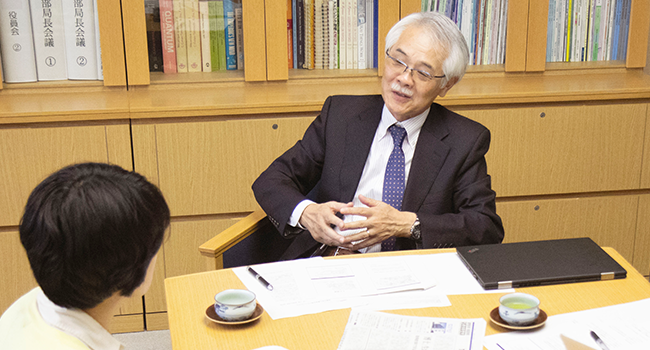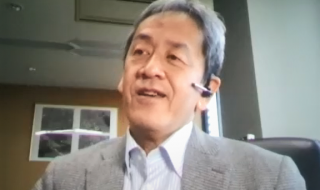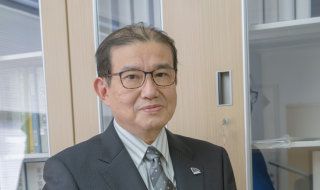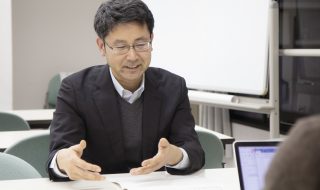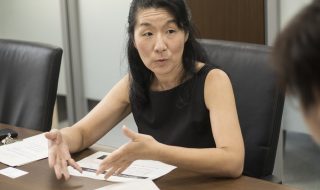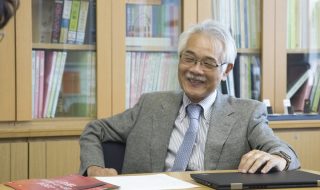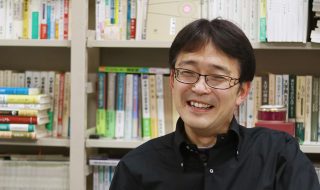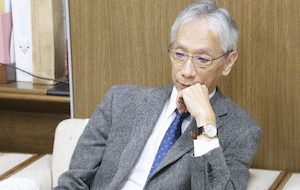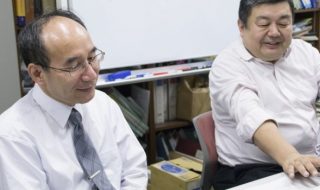Five years have passed since Dr. Masao Kitano was appointed Executive Vice-President for Education, Information Infrastructure, and Evaluation. In this interview, Dr. Kitano looks back on his career and shares his views on Kyoto University’s current education system, achievements, challenges, and future directions.
EFFORTS STARTING TO BEAR FRUIT OVER YEARS
In your five years of experience in the executive office, how do you think Kyoto University has improved from educational perspectives?
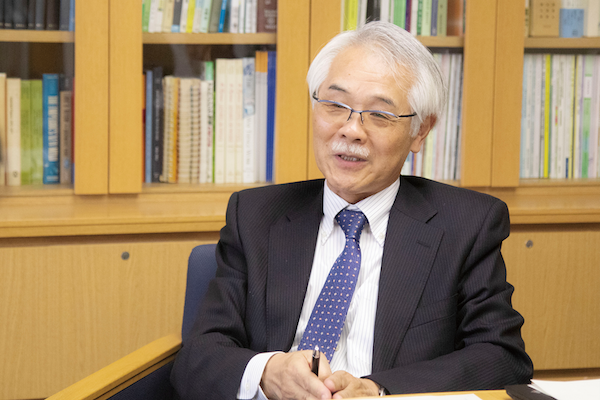
I started my career as Executive Vice-President for Education in October 2014. It was about the time when Institute for Liberal Arts and Sciences (hereafter “ILAS”) was getting on track with its educational reformation in undergraduate liberal arts and sciences courses. Our efforts went a long way toward redesigning liberal arts and sciences course curriculums, and hiring new foreign faculties who were recommended by each graduate school/ faculty/ institute to offer lecturers in English at ILAS. These had remained as longstanding and pressing issues, but at the same time, getting a university-wide consensus was quite a challenge. I remember we struggled and went through a lot of discussion about our reformation plans.
Back then, the Program for Leading Graduate Schools, which had already been implemented as a graduate school education reform scheme before my appointment at the executive office started, was gaining momentum. Likewise, Kyoto University has taken several new initiatives in the past few years: the ELCAS Program, originally from the Department of Science, was incorporated into the university’s high school-university partnership program; the unique entrance examinations as well as Kyoto iUP started as part of the university’s entrance examination reform. In terms of globalization and student mobility, Kyoto University was funded with the Super Global University (SGU) Project, where I was playing a central role in launching the Joint-Degree and Double-Degree Programs.
Besides, I took the lead in the formulation of course trees and a review of the 3 policies, which are still afresh in my memory.
Though each one of these tasks was challenging, now I can say that our efforts are finally starting to bear fruit. A follow-up survey was conducted to those students who were admitted to Kyoto University through the unique entrance examination. The survey results indicate that these students are in good academic standing in general, and are active in class and extracurricular activities as well. For instance, a group of such students participated in the NHK Student Robot Contest for the first time in 15 years, resulting in winning the 1st place in the national championship. This is apparently a successful case of our educational reform.
With Kyoto iUP, we received about 220 applications for admission in AY2019, while only 15 seats were available for the preparatory course. We were able to screen applicants from a big pool of highly motivated and talented students from top-tier high schools, mainly from ASEAN countries. I heard there were more than 350 applications for the AY 2020 intake.
You mentioned early on that you "struggled," but could you specify what was struggling the most?
This may sound like an old cliché, but at Kyoto University, the headquarters has not so much power over departments in taking initiatives, as individual departments have autonomous control over their educational policies. They wouldn’t listen to the headquarters’ requests easily.
On the flip side, this system symbolizes the independent decision-making of each department on their education. Nonetheless, locating ourselves in the environment where external auditors constantly ask us “What does the university do as a whole?”, “Based on what philosophy does the university provide education?”, and “What is the overall assessment of the university?”, we do not think it is realistic for each department to act as an independent school.
Take entrance examinations as an example. Officially, each department is responsible for administering entrance examinations, while the de facto administrator of the entrance examinations is the university. This may lead to further complications, however. Even if each department performs well in administering examinations , the sum of their performances does not always promise the university’s success. What should the university as a “whole” do while respecting each department and faculty member’s “individuality”? – This has always been a lingering question.
DATA ESSENTIAL FOR OVERVIEWING THE UNIVERSITY AS A WHOLE
Looking at both individuals and the whole equally. Neither one of them should be disregarded. Is that right?
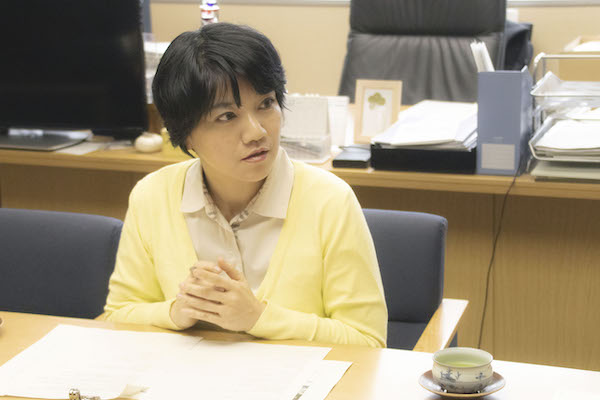
That’s right. University management should find the right balance between the individuals and the university as a whole. This is not as easy as it may sound, though. The current management system has triggered criticism from external auditors, like “The university should take a more centralized management approach” and “The headquarters should exercise more control in governing the university.” Meanwhile, internal reports and complaints never stop coming. Kyoto University is home to a number of professors who are passionate about research and education with a sense of independence. In such an environment, taking a top-down approach is not a feasible plan.
We, as executive officers, do not believe that a top-down approach would be any sufficient. As we always keep saying, what stands out about Kyoto University is its quality education offered by each faculty member. I sometimes audit actual classes where each and every faculty member elaborates on designing their courses not as a performance but in such a way that entertains their students as well as teaching staff like us.
While each class is well designed and taught efficiently by each faculty member, it doesn’t necessarily mean that the university as a whole succeeds in providing high-quality education. Rather, there’s much room left for improvement for the university as a whole. The university should strive hard to improve the quality of education by working as an integrated system and by closely analyzing available data.
By analyzing available data?
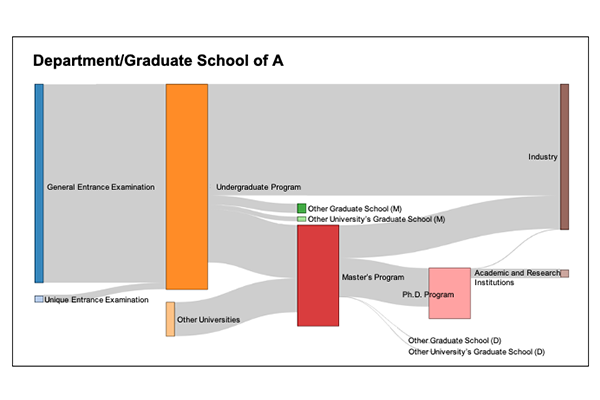
The Student Flow that Dr. Kitano created (example)
Exactly. A discussion won’t lead anywhere if it’s solely based on subjective impressions. On the other hand, data helps us visualize how far we have come so far and what more to do. In analyzing data, we should set an agenda at the onset. Without an agenda, efforts on creating spreadsheets and graphs would end in vain.
Since the time I took this position that overlooks the whole university system, I have made different types of graphs and figures: a graph that represents the distribution of top- and bottom-rank entrance exam passers with reference to each passer’s score and the minimum passing score from their undergraduate entrance examination; a visual and numerical flowchart which shows the academic and career paths that students take from enrollment to graduation, to graduate studies, and into the workforce, categorized by departments and graduate schools (see the “Student Flow”); a graph of correlation between registered credits and credits earned. By visually analyzing such data, we have come to realize pressing issues such as the polarization of entrance exam passers, challenges that graduate schools encounter in addition to their pressure to meet student quotas, the validity of the CAP system, etc. Undoubtedly, the extraction of related data permitted us to visually identify the current needs and challenges.
Nevertheless, even such visual data would not always enough to convince others instantly and work together. It takes some time to garner their understanding.
TAPPING CREATIVITY IN PURSUIT OF FREEDOM
Could you elaborate on the relation between the whole and individuals? You don't assume that an individual's freedom can be deprived of if the individual has to work for the whole, right?
No, that’s not what I mean. It’s rather the other way around. This may sound like a paradox, but I believe a specific framework or restriction should be set in order to organize and optimize the whole, so that the individuals can maximize their freedom. In practice, when we reformed the liberal arts and sciences course curriculum, we reorganized timetables and courses to a considerable extent, and decreased the number of courses as well.
Many of the faculty members would say, “What’s the point of depriving students of their freedom of choice?” To me, it sounds like they just criticize us with experience from their school days when they were capable of juggling freedom. The reality is that, nowadays, quite a number of students are satisfied with the freedom given, take the easy way out, and graduate without studying enough. Some students end up repeating a year as they fail to earn enough credits required for graduation, despite that they have registered for quite many courses. What we can do for these students is not to offer more choices than they can handle, but to guide them to engage in each course purposefully.
All in all, our efforts in analyzing and presenting data have paid off, as such visual aids tailor each student to the courses required for graduation and classes suitable for their career.
Though our educational system has incorporated such frameworks and restrictions for the sake of pursuing freedom, there’s still much room left to consider for each individual’s creativity to spark. Research quality and competitiveness would improve exponentially if our unique educational system attracts truly talented students to Kyoto University. With that said, I think appreciating creativity in education is literally meaningful.
Finally, could you share what your expectations are toward Kyoto University's education?
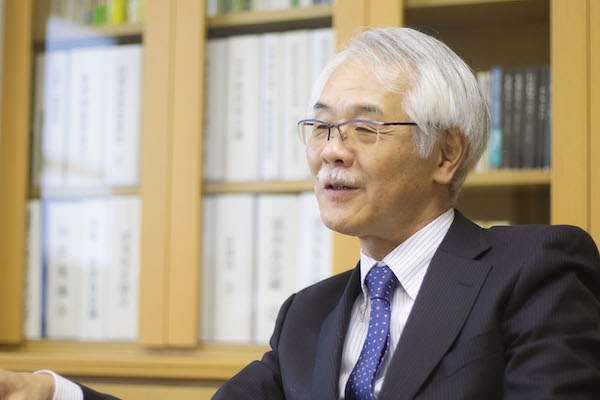
I have some more years to go in the office, so let me take this opportunity to share my views on Kyoto University’s education. What I would like to stress is the importance of Kyoto University’s presence. It is an open space where people come, network, and go. It is also a hub that connects people. An open-system university, in other words. The significance of its presence as a “space” will remain unchanged over the years, and I want the university to sustain the system as it is now.
A university evolves through flows of people, thus its shape keeps changing all the time. If a system works at a satisfactory level, it won’t require further attention. If a system faces challenges, that’s when I encourage all Kyoto University staff, whether in a teaching position or in a director position, or as an executive member, to think outside the box and tackle these challenges.
One example is to quit paper-based entrance examinations at all ever since we live in an era when every aspect of our lives is measurable. I am calling for such unconventional ideas and proposals. Luckily enough, Kyoto University has a climate that favors experimenting with new ideas, even if it’s on a trial-and-error basis. My wish is to witness educational innovation with ideas sprouting from open and Kyoto University-like minds.
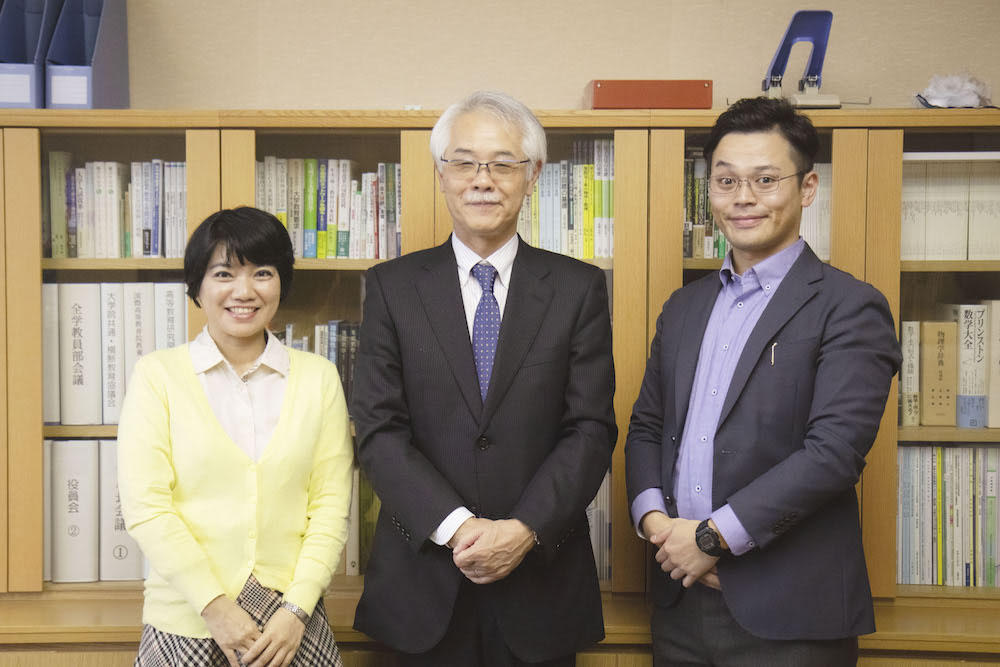
Photographed by: Ryohei KIZAKI (Assistant Teaching Staff, Center for the Promotion of Excellence in Higher Education, Kyoto University)
(Recording day: December 19, 2019)
List of Interviews


